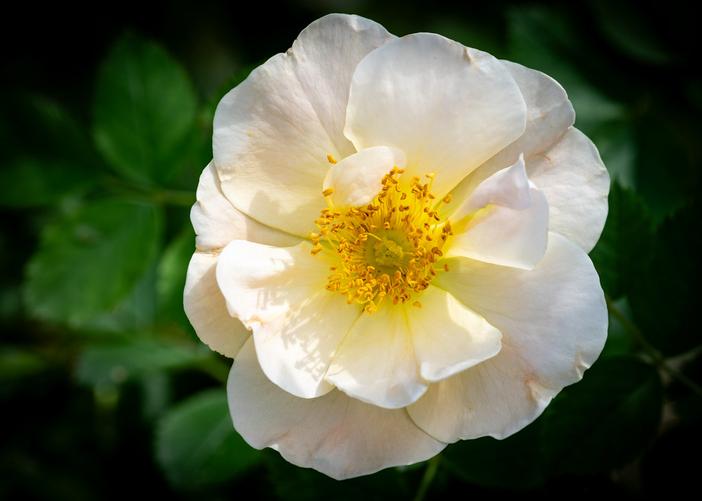Musk Rose
(Rosa moschata)
Musk Rose (Rosa moschata)
/
/

Sharon Mollerus
CC BY 2.0
Image By:
Sharon Mollerus
Recorded By:
Copyright:
CC BY 2.0
Copyright Notice:
Photo by: Sharon Mollerus | License Type: CC BY 2.0 | License URL: https://creativecommons.org/licenses/by/2.0/ | Uploader: Sharon Mollerus | Publisher: Flickr































Estimated Native Range
Summary
Rosa moschata, commonly known as the Musk Rose, is a deciduous shrub native to the foothills and temperate regions of the western Himalayas. It can grow up to 10 feet tall and is characterized by its arching canes and light to greyish-green leaves with ovate leaflets. The Musk Rose produces single, white, fragrant flowers with a musky scent from late spring to late autumn, making it a highly valued plant for its extended blooming season. The flowers are not particularly showy but are appreciated for their fragrance and historical significance. The stems are armed with straight or slightly curved prickles, which are typical of rose plants.
The Musk Rose is celebrated for its contribution to rose breeding, being a progenitor of many cultivated rose groups. It is often used in breeding programs to impart fragrance and a long flowering period to new cultivars. In gardens, it is used for its fragrance and as a climbing rose, capable of covering walls, fences, and trellises. This rose prefers full sun to part shade, well-drained soil, and regular watering, though it is relatively drought-tolerant once established. It is generally easy to maintain but can be susceptible to common rose diseases such as black spot and powdery mildew. Pruning is important to maintain its shape and promote vigorous growth.CC BY-SA 4.0
The Musk Rose is celebrated for its contribution to rose breeding, being a progenitor of many cultivated rose groups. It is often used in breeding programs to impart fragrance and a long flowering period to new cultivars. In gardens, it is used for its fragrance and as a climbing rose, capable of covering walls, fences, and trellises. This rose prefers full sun to part shade, well-drained soil, and regular watering, though it is relatively drought-tolerant once established. It is generally easy to maintain but can be susceptible to common rose diseases such as black spot and powdery mildew. Pruning is important to maintain its shape and promote vigorous growth.CC BY-SA 4.0
Plant Description
- Plant Type: Shrub
- Height: 5-8 feet
- Width: 4-6 feet
- Growth Rate: Moderate
- Flower Color: White
- Flowering Season: Summer, Fall
- Leaf Retention: Deciduous
Growth Requirements
- Sun: Full Sun, Part Shade
- Water: Medium
- Drainage: Medium, Fast
Common Uses
Bee Garden, Bird Garden, Border Plant, Fragrant, Showy Flowers
Natural Habitat
Foothills and temperate regions of the western Himalayas
Other Names
Common Names: Musk Rose, Angel Rose, Balsam Rose
Scientific Names: , Rosa moschata, Prunus cerasifera subsp. pissartii, Rosa arborea, Rosa arborea, Rosa arborea, Rosa broteroi, Rosa brownii, Rosa brunonii var. arborea, Rosa brunonii var. nepalensis
GBIF Accepted Name: